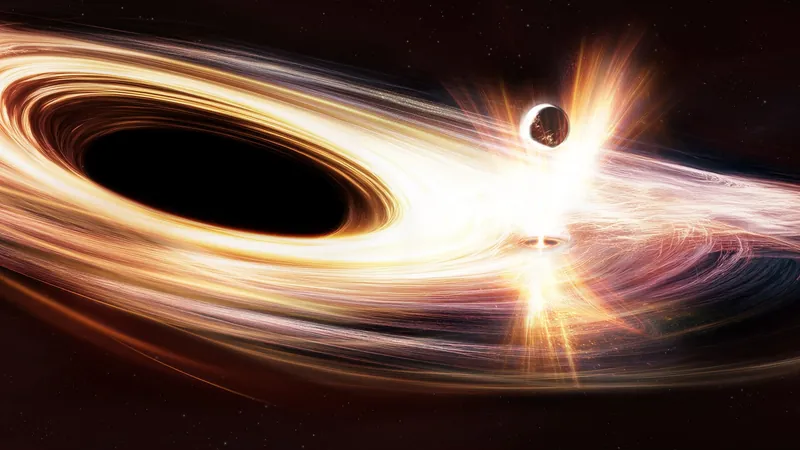
Awakening Giant: Black Hole Unleashes 100x More Energy, Shocking Astronomers!
2025-04-16
Author: Lok
In a stunning cosmic development, a galaxy 300 million light-years away in the Virgo constellation, known as SDSS1335+0728, has captured the attention of astronomers since December 2019. This ordinary galaxy has become extraordinary as its dormant black hole suddenly erupted with brilliance, releasing an avalanche of energy and light that is reshaping our understanding of these enigmatic giants.
Recent research indicates that this black hole, dubbed Ansky, is not just awake; it’s unleashing X-rays at unprecedented intervals. These phenomena, labeled quasi-periodic eruptions (QPEs), have been documented in other black holes but the intensity here is mind-boggling, being up to 100 times stronger than typical outputs.
First detected in February 2024 by a team from Valparaiso University in Chile, this black hole's newfound activity offers a groundbreaking perspective on its behavior, signalling a vibrant awakening with no indication of returning to slumber.
The findings were published on April 11 in *Nature Astronomy*, where the lead researcher, Lorena Hernández-García, emphasized the uniqueness of this occurrence. "This is the first time we have observed such an event in a black hole that seems to be waking up. It allows astronomers to witness black hole behavior in real-time,” she noted.
Ansky's journey into the spotlight began in late 2019 when its unexpected brightness caught astronomers' eyes. Researchers from the European Southern Observatory, collaborating with NASA's Swift and eROSITA X-ray telescopes, concluded that the black hole was entering an active phase.
However, what set the recent X-ray bursts apart was their extraordinary persistence—lasting ten times longer and exhibiting ten times the brightness of average QPEs. Each outburst of energy lasts over four days, providing new insights into black holes that challenge existing theories.
Ansky’s QPEs differ significantly from expected models, prompting scientists to rethink their underlying mechanisms. While traditional QPEs are thought to be triggered by the interaction between accretion disks and nearby celestial bodies, Ansky showed no signs of shredding stars into its disk, suggesting alternative explanations.
One intriguing theory proposes that the energy surges stem from violent disturbances in the accretion disk, perhaps triggered by smaller celestial objects disrupting the orbit of its material. Additionally, the upcoming Laser Interferometer Space Antenna (LISA) by the European Space Agency, set to launch in 2035, may shed light on the gravitational waves that could be responsible for these remarkable bursts.
As Ansky continues to defy expectations and reshape our understanding of black holes, Hernández-García summed it up: "Studying Ansky will help us better understand black holes and how they evolve." The cosmic giant’s antics are paving the way for a new era of astronomical discovery.





 Brasil (PT)
Brasil (PT)
 Canada (EN)
Canada (EN)
 Chile (ES)
Chile (ES)
 Česko (CS)
Česko (CS)
 대한민국 (KO)
대한민국 (KO)
 España (ES)
España (ES)
 France (FR)
France (FR)
 Hong Kong (EN)
Hong Kong (EN)
 Italia (IT)
Italia (IT)
 日本 (JA)
日本 (JA)
 Magyarország (HU)
Magyarország (HU)
 Norge (NO)
Norge (NO)
 Polska (PL)
Polska (PL)
 Schweiz (DE)
Schweiz (DE)
 Singapore (EN)
Singapore (EN)
 Sverige (SV)
Sverige (SV)
 Suomi (FI)
Suomi (FI)
 Türkiye (TR)
Türkiye (TR)
 الإمارات العربية المتحدة (AR)
الإمارات العربية المتحدة (AR)